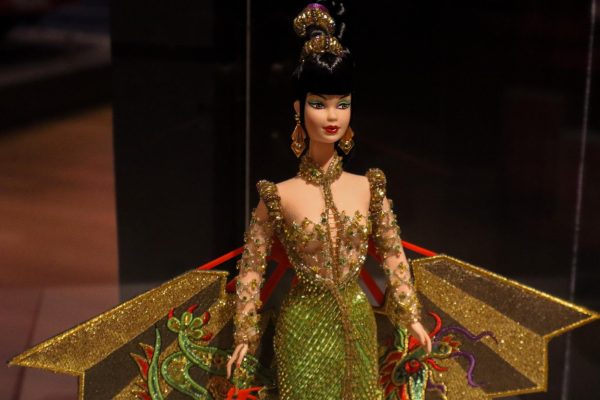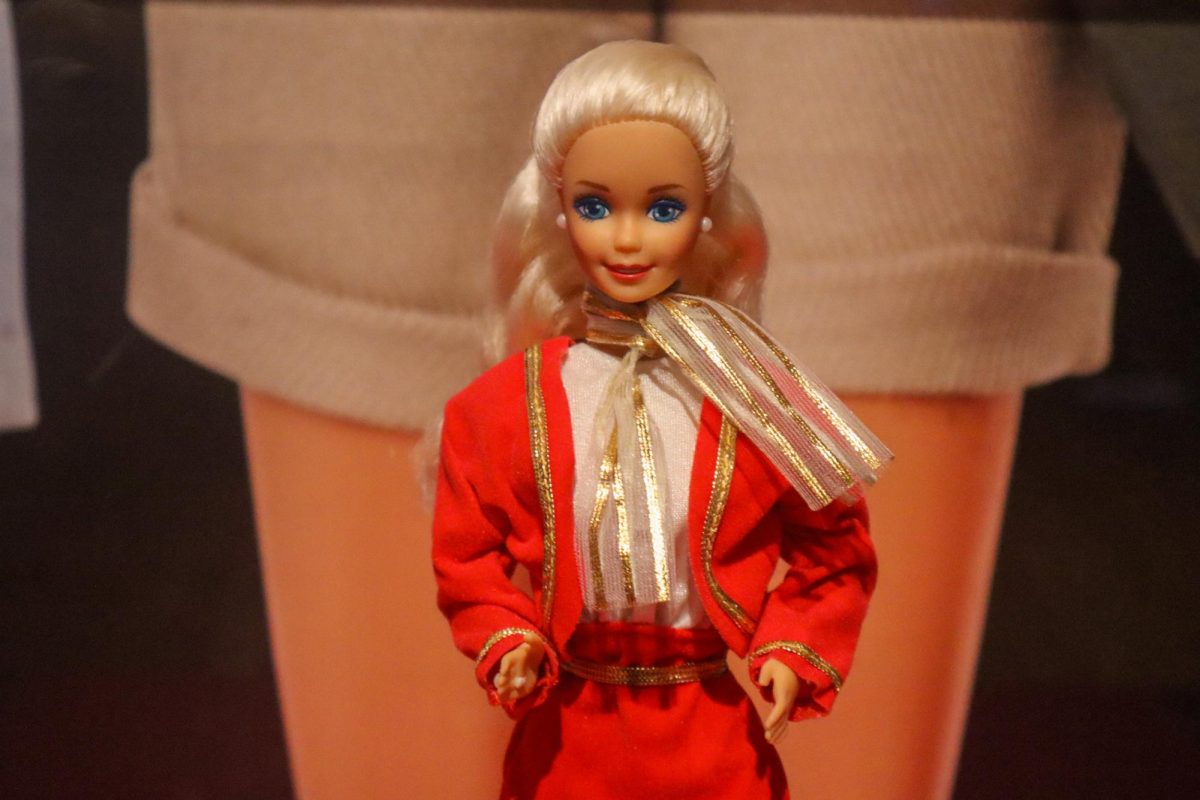Two days after the presidential election, tears rolled down my face in the Museum of Arts and Design as I watched a woman standing in front of a bright-pink gallery wall hug her wonderstruck daughter. The mother noticed me watching them, nodded and smiled sympathetically. Her kind expression meant the world to me — it helped me feel reassurance and a sense of community despite my sadness. Women across the nation are frightened, frustrated and uncertain as women’s rights face countless threats from our elected officials. As I turned to enter the exhibition behind me, I was greeted by vibrant colors, stunning fashion and a much-needed reminder that women are capable of anything.
Spanning the fourth and fifth floors of the Museum of Arts and Design, “Barbie®: A Cultural Icon” features over 250 authentic dolls spanning 65 years. The exhibition embraces Barbie’s careers in numerous fields and her historic connection to the fashion industry. During these uncertain times, this display simultaneously serves as a touching reminder of how far we’ve come and as inspiration for where we can go from this troubling period.
Sections throughout the exhibition highlight Barbie’s careers by the decade. Viewers watch as Barbie becomes a flight attendant in an adorable blue button-up jacket and matching skirt, a member of the army in a black skirt and matching suit jacket with red embroidery, and the president in a red and gold ensemble with matching heels.
As time goes on, Barbie enters traditionally male-dominated fields. By showcasing Barbie’s ability to break the status quo while expressing her creative style, the exhibition reminds viewers of women’s progress towards gender equality. Representation of a working woman, even if she’s a doll, demonstrates Mattel’s dedication to showing young girls the scope of what they can achieve.
Despite Barbie’s wide range of career representation, the doll is far from perfect. Barbie has a history of promoting unhealthy beauty standards to young girls, as almost all of the dolls share the same thin physique. While Barbie has 35-plus skin tones and 94-plus hairstyles, she only has nine body types. Barbie may be “the most diverse and inclusive doll line in the world,” as an exhibition label points out, but there is still a lot of work to be done so that everyone is represented. The exhibition does not acknowledge that Barbie is not fully inclusive, which dampens its message of equality.

A particularly strong aspect of the exhibition, however, was its focus on Barbie’s fashion. “Fantasy Goddess of Asia Barbie,” created by fashion designer Bob Mackie, was part of a 1990s collaboration, and this doll is truly stunning. She wears a lime and gold beaded floor-length gown with bedazzled mesh sleeves. Her dangly earrings are gold with circular green accents to match both her dress and her gold hair piece, and a sparkly gold fan and green dragon are embroidered onto the back of her dress. This 1998 Barbie is far more elevated than many past dolls, cementing her as a fashion icon. While the exhibition features other designer collaborations, such as one with Italian brand Moschino, Mackie’s stands out because of the vivid colors, sparkles and glamour. By seeing Barbie as both a style icon and career-driven individual, young girls are encouraged to express their creativity through fashion. Barbie doesn’t limit herself to one career or style, showing girls that they shouldn’t, either.
An adorable addition to the exhibition is the inclusion of photo ops with items from the Barbie universe, including Barbie’s pink convertible. Throughout my time at the exhibition, young girls and older women alike sat in the car and smiled for photographs. Seeing so many girls and women find joy in the doll reminded me of the ways women bond through our collective struggle and joy.
Unfortunately, Barbie will be the only female president in the United States for the next four years. However, this exhibition reminds women how much progress we have made toward gender equality, and it inspires women to keep fighting in the face of adversity.
“Barbie®: A Cultural Icon” is on display at the Museum of Arts and Design until March 16, 2025.
Contact Skylar Boilard at [email protected].

























































































































































